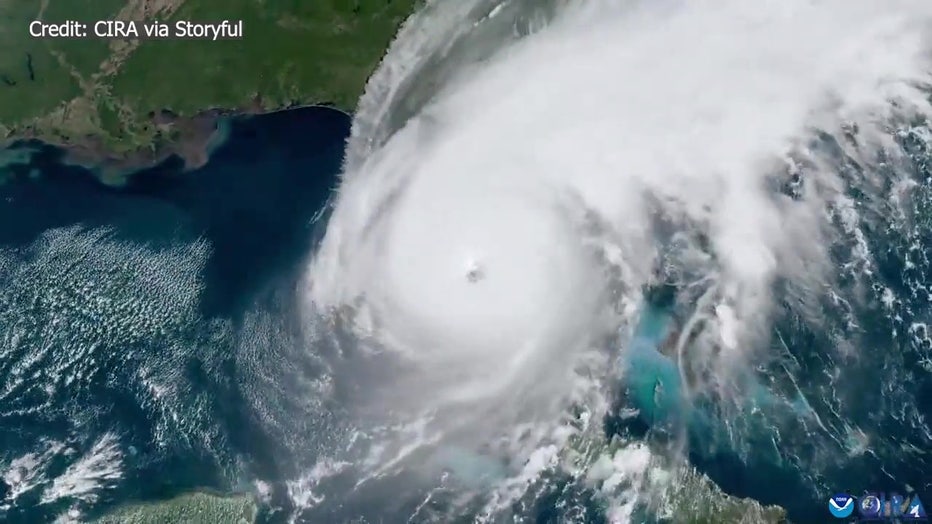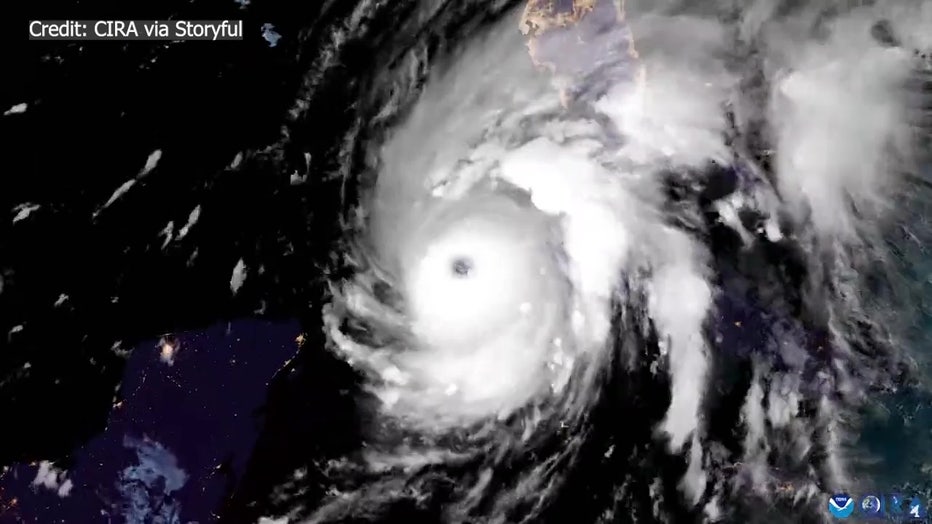Watch Hurricane Ian develop and trek across the Caribbean and Florida

Hurricane Ian satellite imagery
Satellite imagery shows Hurricane Ian?s path from the Caribbean to Southwest Florida.
FORT COLLINS, Colo. - Newly-released satellite imagery from the Cooperative Institute for Research in the Atmosphere (CIRA) shows how a tropical depression grew into Tropical Storm Ian before becoming a hurricane and rapidly gaining strength before slamming into Southwest Florida and making its way across the state.
According to the National Hurricane Center, the storm formed over the Caribbean Sea on Friday, September 23.
The video from CIRA shows the storm from Saturday, September 24, to Friday, September 30, based on the NOAA Hurricane Tracker and data from the National Hurricane Center.
By September 26, it became a hurricane and began intensifying rapidly before making landfall near Fort Myers as a high-end category 4 hurricane on September 28.
Hurricane Ian had maximum sustained winds of 150 mph, tying the record for the fifth-strongest hurricane on record to strike the United States.

Hurricane Ian had maximum sustained winds of 150 mph, tying the record for the fifth-strongest hurricane on record to strike the United States.
According to NOAA, it was the strongest hurricane to hit Florida since Michael in 2018. It was also the first Category 4 hurricane to impact Southwest Florida since Charley in 2004.
RELATED: Hurricane hunters say Ian flight was ‘worst’ of their careers: ‘dropped 1,200 feet instantaneously’
Ian was downgraded to a tropical storm on Sept. 29 as it tracked inland, crossing over the Florida peninsula.

After Ian moved across Florida, it entered open water and regained hurricane status before making landfall in South Carolina.
After it crossed over the state and entered open water, it strengthened back into a category 1 hurricane on Sept. 30 before turning and making landfall in South Carolina that afternoon.
RELATED: Tervis launches Hurricane Ian relief tumbler to help storm survivors
The storm battered southwest Florida, damaging bridges, and buildings and knocking out power to millions of residents. It also created a massive storm surge that led to widespread flooding.
Recovery efforts are still underway in southwest Florida with numerous organizations and volunteers helping storm survivors.
The Red Cross is also onsite providing resources including shelter, meals, medical supplies and more.

